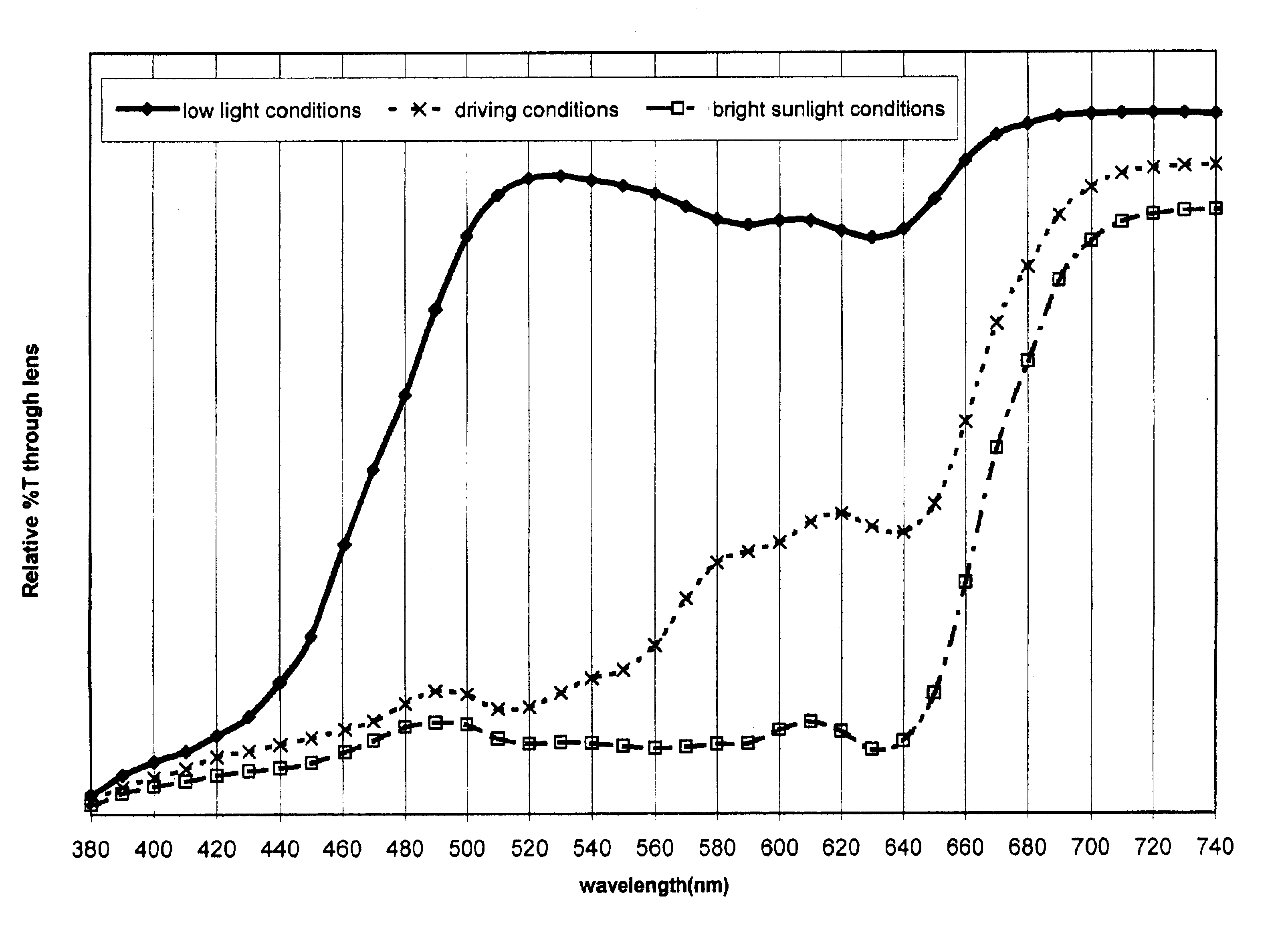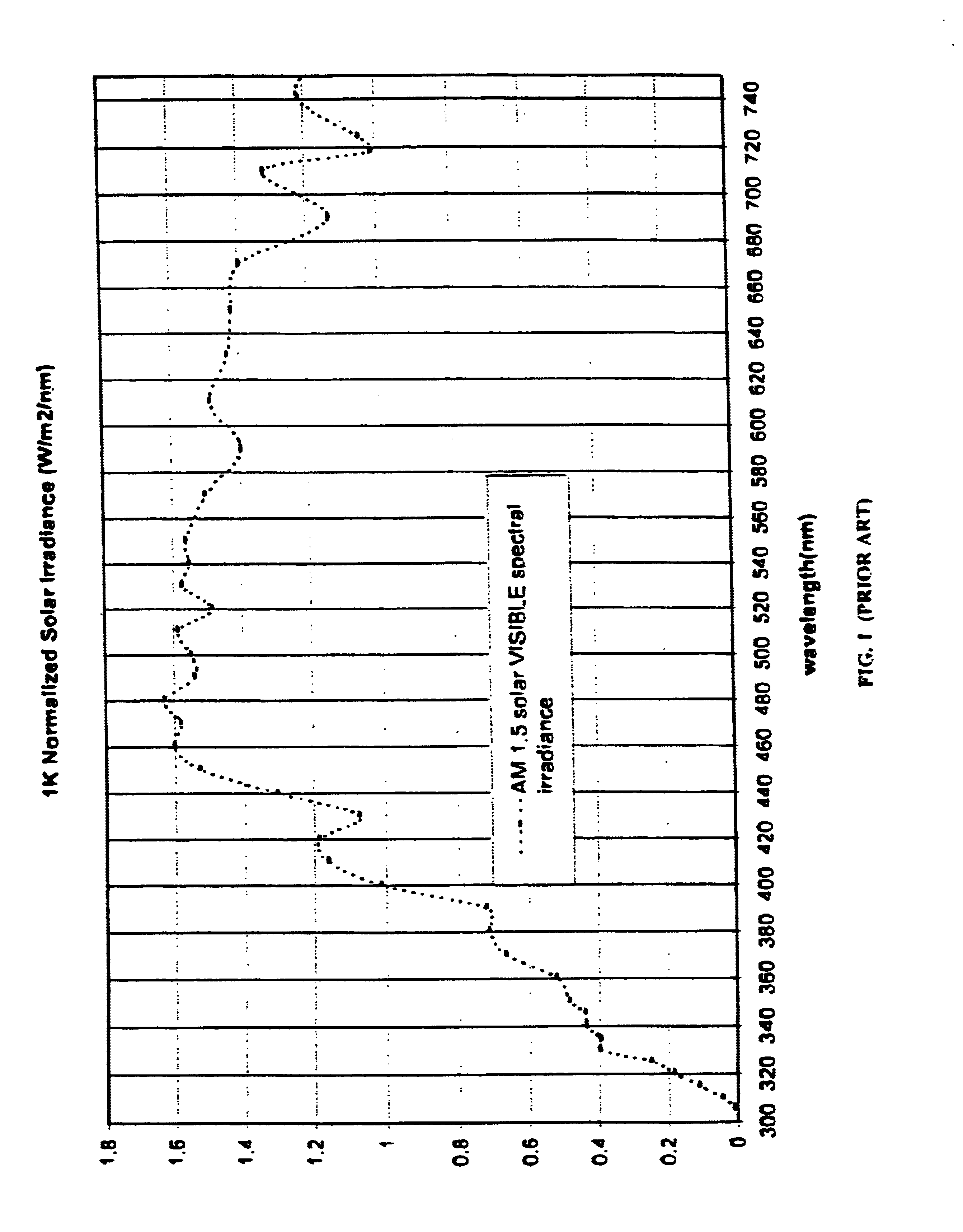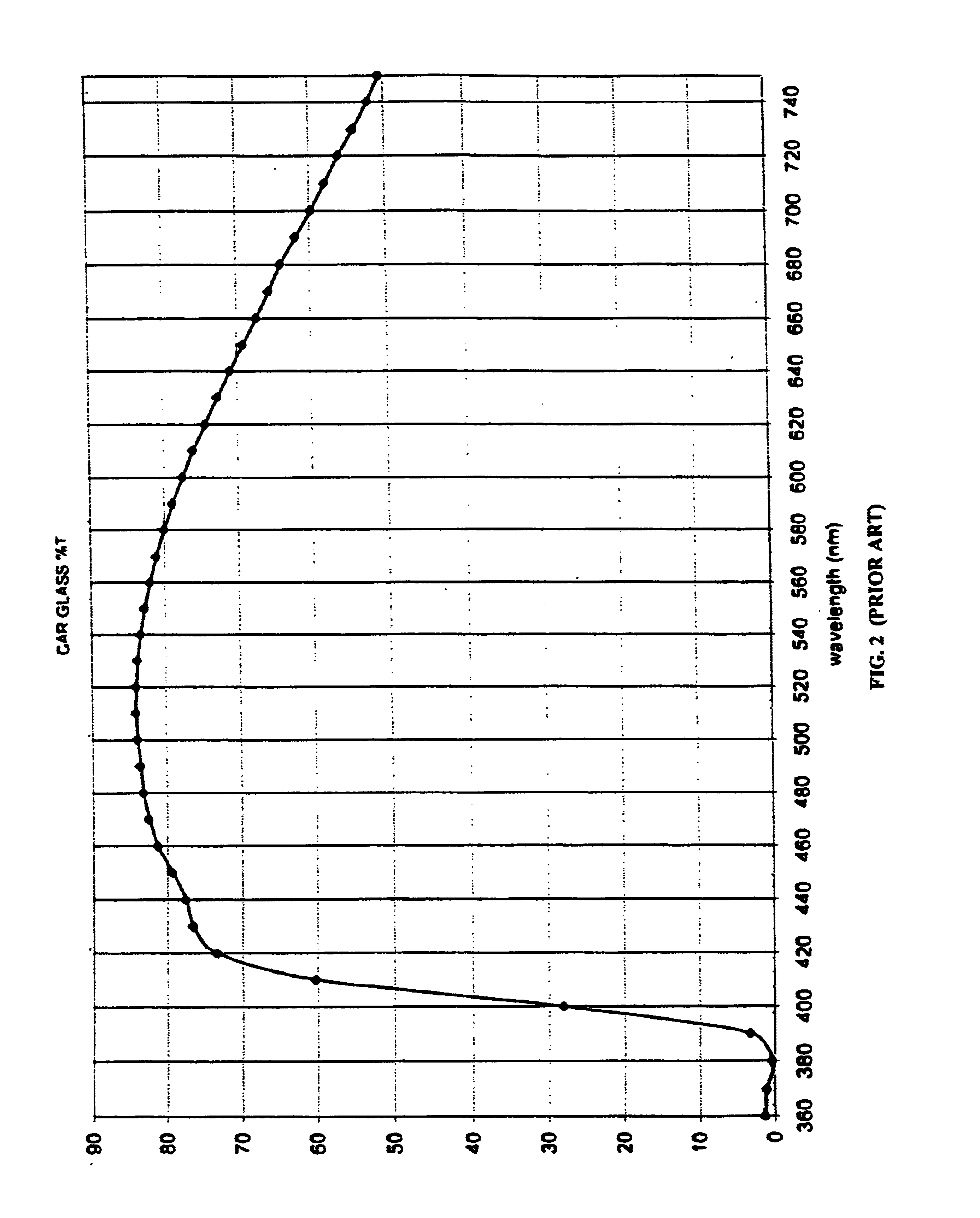Eyewear lens having selective spectral response
- Summary
- Abstract
- Description
- Claims
- Application Information
AI Technical Summary
Benefits of technology
Problems solved by technology
Method used
Image
Examples
example
[0044]A hard resin lens is prepared incorporating coloring agents, such that the lens exhibits a spectrum characterized by a lower transmittance in the 400-450 nm region, and increasing transmittance in the 450-500 nm region. In this example, the lower transmittance in the 400-450 region is achieved by absorption, giving a yellowish color to the lens. The lens contains an embedded polarizer, characterized by a polarization coefficient of at least 90% and approximately 40-50% luminous transmittance, as a passive device to reduce polarized glare under all lighting conditions. At least one photochromic material capable of activation by visible light is incorporated into the lens such that, when activated, it decreases visible light transmittance of the lens, and imparts a brownish color to the lens, due to decreased transmittance in the 450-550 nm region. Additionally, at least one photochromic material capable of activation by UV light is incorporated into the lens such that, when act...
PUM
 Login to View More
Login to View More Abstract
Description
Claims
Application Information
 Login to View More
Login to View More - R&D
- Intellectual Property
- Life Sciences
- Materials
- Tech Scout
- Unparalleled Data Quality
- Higher Quality Content
- 60% Fewer Hallucinations
Browse by: Latest US Patents, China's latest patents, Technical Efficacy Thesaurus, Application Domain, Technology Topic, Popular Technical Reports.
© 2025 PatSnap. All rights reserved.Legal|Privacy policy|Modern Slavery Act Transparency Statement|Sitemap|About US| Contact US: help@patsnap.com



